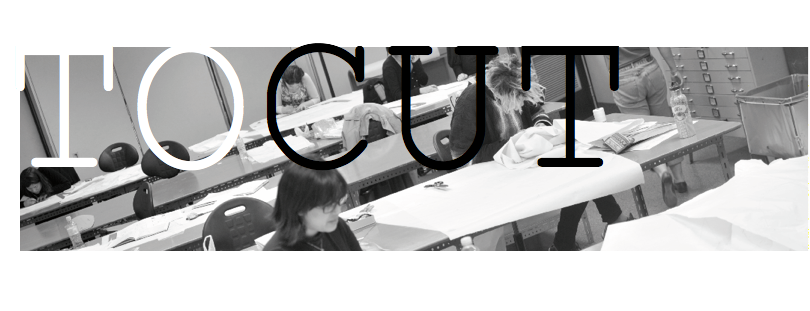- Illustration by Tanya Rapaic
We were lucky enough to have the designers behind one of Melbourne’s most innovative and unique design labels, MATERIALBYPRODUCT, join us to discuss their brand’s origins, techniques and ethos, sharing the workings of their design house as well as their relationship with tailoring and how it plays a fundamental part in the construction and meaning of all they create.
Susan Dimasi & Chantal Kirby both graduated from the fashion design program at RMIT (and managed to get through the tricky tailoring semester we’re currently enduring, proving that there is a light at the end of the tunnel) and bonded in the second year tailoring semester finding a mutual appreciation for the craft that still underpins the core aesthetic of MATERIALBYPRODUCT founded in 2004.
Faced with the tricky task of defining tailoring, Susan explains that to them it consists of two key factors, the grid and cut. The lines of the body comprised of a centre front, bust points, waist line and so on, creating a series of measurements around a three-dimensional form that becomes a two-dimensional grid when drafted, this grid subsequently informs the cut.
This grid is intentionally mapped out in a modern version of tailor-tacking on the fabric known as their ‘template’ which has become a defining visual aesthetic of their work and an homage to the original methodology. Dots are printed, laser cut, painted or even drawn using whiteout onto the cloth and become a map of the body that dictates how the finished piece will form over the wearer. Cut is mathematical and as minimal as possible, incisions informed by tailoring and the grid, usually resulting in only a single seam followed by draping methods on the stand. The statement “one-cut, one-seam” is the defining mantra that constantly informs the duo’s design direction.
Artisanal quality and techniques are also a key part of what their brand stands for, leaning more towards hand processes that are viable in moderate consumption, but are essential to the integrity and sophistication of their product.
Chantal and Susan look back to the work of some of the last century’s masters for inspiration, channelling Chanel’s ability to rework fashions using the same underlying concepts and techniques and Vionnet’s minimal and purist aesthetic dictating how fabric is cut, joined and therefore drapes on the body.
Not only is their work unique and visually appealing, they are pioneering an inventive approach to minimising waste, challenging the Fashion industry’s negative environmental reputation in a number of ways. This is done through the careful and considered cut of the fabric so that excess material attached to the main cloth becomes integral to the silhouette and design of the garment. They also conserve energy and machine usage by completing two or more processes in one step, such as machine embroidering the brand’s label to the inside of a garment which also acts as the anchor, holding the garments integral structure points in place.
Because of their rejection of of fashion trends and the conscious decision to exclude themselves from the ‘fast fashion’ phenomenon their sustainable garments create a classic aesthetic does not radically alter season to season.
Both designers agree that inspiration derived from tailoring, drape and the precise signature methods they have formulated never ceases and believe the possibilities to rework and advance are infinite, so we look forward to seeing how MATERIALBYPRODUCT evolves and continues to impress!
- Written by Georgia Wyrill


No comments:
Post a Comment